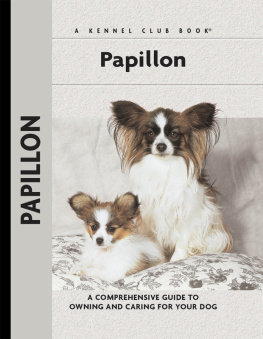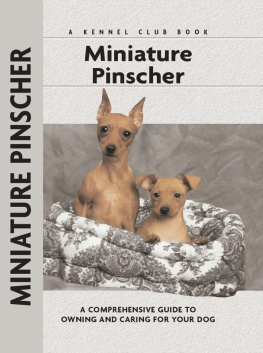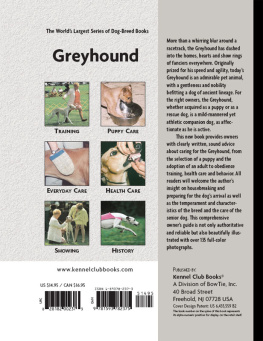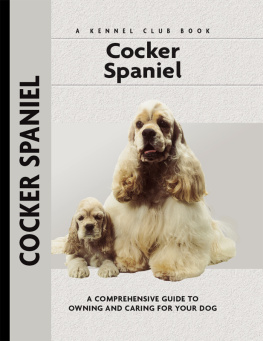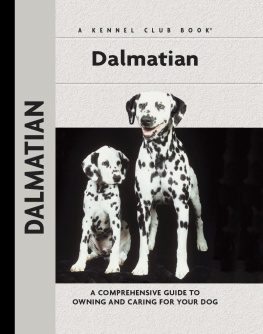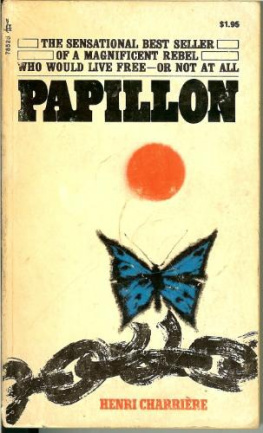
Physical Characteristics of the Papillon
(excerpted from the American Kennel Club breed standard)
Skull: Of medium width and slightly rounded between the ears. A well-defined stop is formed where the muzzle joins the skull.
Eyes: Dark, round, not bulging, of medium size and alert in expression. Eye rims black.
Ears: Erect or drop type should be large with rounded tips, and set on the sides and toward the back of the head.

Nose: Black, small, rounded and slightly flat on top.
Lips: Tight, thin and black.
Neck: Of medium length.
Muzzle: Fine, abruptly thinner than the head, tapering to the nose. The length of the muzzle from the tip of the nose to stop is approximately one-third the length of the head from tip of nose to occiput.
Bite: Teeth must meet in a scissors bite.
Forequarters: Shoulders well developed and laid back to allow freedom of movement. Forelegs slender, fine-boned and must be straight. Front feet thin and elongated (hare-like), pointing neither in nor out.
Body: The chest is of medium depth with ribs well sprung. The belly is tucked up.
Proportion: Body must be slightly longer than the height at withers.
Topline: Straight and level.
Hindquarters: Well developed and well angulated. The hind legs are slender, fine-boned, and parallel when viewed from behind. Hocks inclined neither in nor out. Hind feet thin and elongated (hare-like), pointing neither in nor out.
Tail: Long, set high and carried well arched over the body. The tail is covered with a long, flowing plume.
Coat: Abundant, long, fine, silky, flowing, straight with resilient quality, flat on back and sides of body. A profuse frill on chest. Hair short and close on skull, muzzle, front of forelegs, and from hind feet to hocks. Ears well fringed. Backs of the forelegs are covered with feathers diminishing to the pasterns. Hind legs are covered to the hocks with abundant breeches (culottes).
Color: Always parti-color or white with patches of any color(s). A clearly defined white blaze and noseband are preferred to a solidly marked head.
Size: Height at withers, 8 to 11 inches. Weight is in proportion to height.
Contents

Also known as the butterfly dog, the Papillon is one of the oldest and most revered of the Toy breeds. The companion of royalty throughout history, the breed originated in France and became part of high society and aristocracy wherever it went. As dog showing became more common, trace the Papillons concurrent rise in popularity.
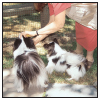
Superior intelligence and regal beauty are but two of the traits that attract so many to the Papillon. Discover the breeds complex and wonderful personality and find out if you are the right type of owner for a Papillon. Learn about the myriad activities in which the Papillon excels, as well as health considerations for the breed.

Learn the requirements of a well-bred Papillon by studying the description of the breed set forth in the American Kennel Club standard. Both show dogs and pets must possess key characteristics as outlined in the breed standard.

Be advised about choosing a reputable breeder and selecting a healthy, typical puppy. Understand the responsibilities of ownership, including home preparation, acclimatization, the vet and prevention of common puppy problems.

Enter into a sensible discussion of dietary and feeding considerations, exercise, grooming, traveling and identification of your dog. This chapter discusses Papillon care for all stages of development.

By Charlotte Schwartz
Be informed about the importance of training your Papillon from the basics of house-breaking and understanding the development of a young dog to executing obedience commands (sit, stay, down, etc.).

Discover how to select a proper veterinarian and care for your dog at all stages of life. Topics include vaccination scheduling, skin problems, external and internal parasites and common medical and behavioral conditions, plus a guide to canine eye problems.

Recognize the signs of an aging dog, both behavioral and medical; implement a senior-care program with your veterinarian and become comfortable with making the final decisions and arrangements for your senior Papillon.
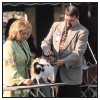
Experience the dog show world, including different types of shows and the making up of a champion. Go beyond the conformation ring to other types of canine competition.
KENNEL CLUB BOOKS PAPILLON
ISBN 13: 978-1-59378-256-6
eISBN 13: 978-1-59378-895-7
Copyright 1999 Kennel Club Books An Imprint of I-5 Press A Division of I-5 Publishing, LLC
3 Burroughs, Irvine, CA 92618 USA
Cover Design Patented: US 6,435,559 B2 Printed in South Korea
All rights reserved. No part of this book may be reproduced in any form, by photostat, scanner, microfilm, xerography or any other means, or incorporated into any information retrieval system, electronic or mechanical, without the written permission of the copyright owner.
Photographs by:
Norvia Behling, TJ. Calhoun, Doskocil,
Isabelle Francais, Carol Ann Johnson, Bill Jonas, Mikki Pet Products,
Karen Taylor and Alice van Kempen.
The owner wishes to thank the owners of the dogs featured in this book, including
Natalie D. Carlton, Dale Cunningham, Nancy Duke, Roseann Fucillo,
Maxine J. Gurin, Barbara Manno, Marilyn Mele, Robert P. Santella
and Vesa Toivanen.
Illustrations by Rene Low.

ORIGIN OF THE BUTTERFLY DOG
Dainty companion of kings and royalty; diminutive package of poise and personality; faithful, fun-loving and full of mischief: such is the charming Papillon, who has long reigned as one of the most captivating Toy dogs known to man.
The tiny Papillon is perhaps best known for his lovely erect and delicately feathered ears, which is the characteristic from which the breed derives its name,
Next page
